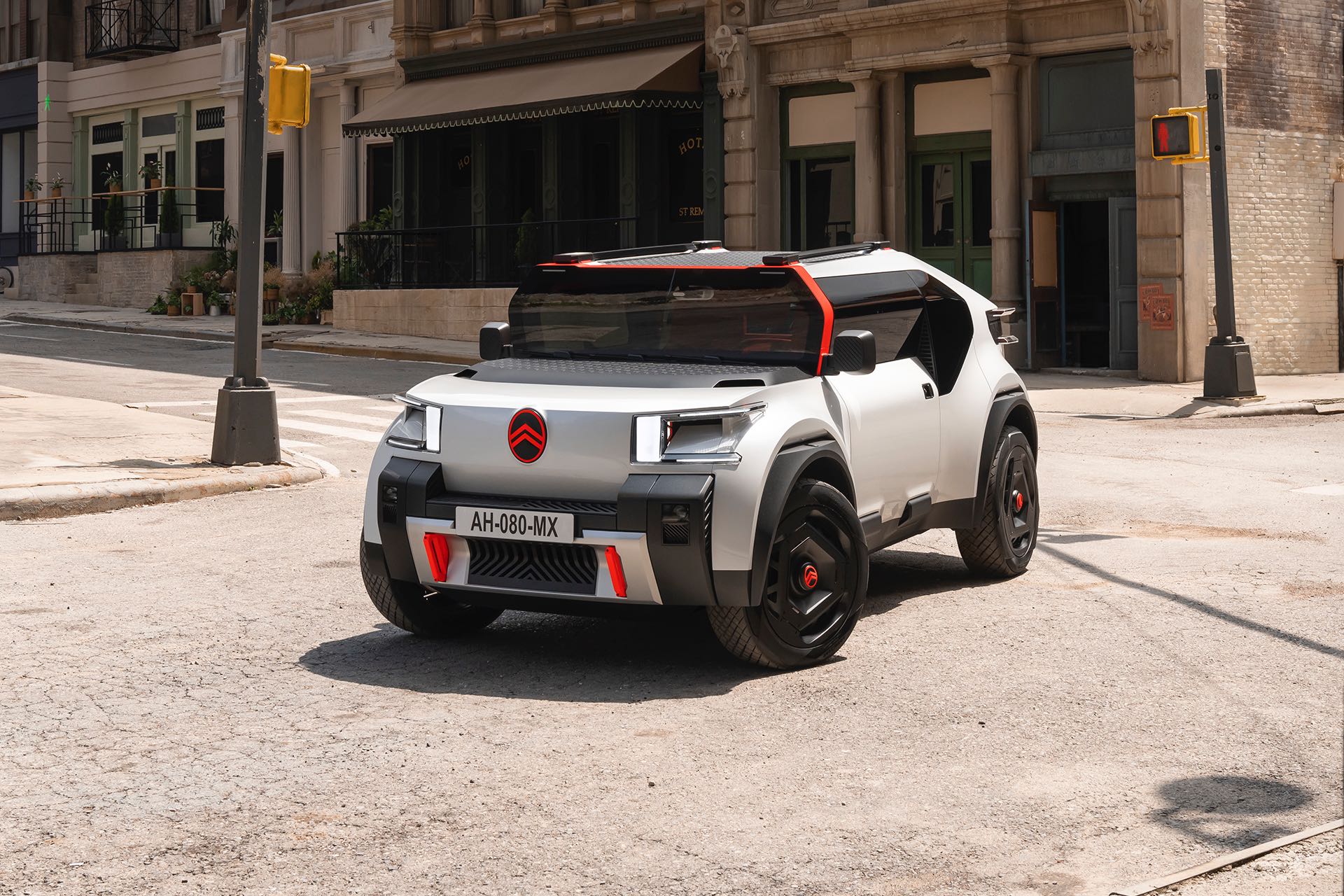BASF and Citroen have together unveiled the all-electric ‘Oli’ concept car to demonstrate weight saving technology and resource use.
“This concept car shows what can be achieved when partners trust one another and are bold enough to tread new paths,” said Uta Holzenkamp, President Coatings at BASF. “The result is an entire microcosm of ideas and solutions that goes way beyond the original concept.”
With speed limited to 110 km/h and acceleration close to the classic Citroen 2CV, the concept uses a minimalistic approach which the companies said “paved the way for a refreshing and innovative design”. Various components were “radically reinterpreted and constructed” by using materials in a different context – for example, the complete backrest is made of a flexible 3D-printed plastic material (Ultrasint TPU88A). The open lattice structure provides natural air flow, replacing all ventilators in the seat. There is no sound or navigation system, as the companies believe most customers have a mobile phone and portable speaker which can be plugged in to the dashboard and automatically connected to the vehicle.
As bonded and welded components made from different materials present a challenge in mechanical recycling, many Oli components are designed and manufactured using materials from the same chemical product family.
Additionally, the driver and front passenger doors are identical, limiting the number of pressing tools and reducing complexity.
Citroen worked closely with BASF during development and design, with solutions from the chemical company playing a vital role in the endeavour. “Projects such as the development of the concept car, together with Citroen, are a big boost on our way towards a more sustainable future,” Holzenkamp said. “You need innovation and creative minds to bring the ideas from the different companies together.”

In addition to its product and engineering knowledge, BASF contributed its design expertise. “This is where the project was born,” said Alex Horisberger, Manager Industrial Design at BASF. “On a visit to the creative studio at Citroen, we were able to convince their designers with our materials and trend analyses. Working on the same level with Citroen’s interior and exterior designers was a personal highlight for me.”
Laurence Hansen, Citroen Product & Strategy Director, sees the collaboration in a similar light. “The collaboration with BASF was a key factor in the design of Oli and in developing an electric vehicle that’s as fun and efficient as possible for the near future. The innovative electric car runs counter to the trend toward increasingly heavier and more complex vehicles, instead focusing on ease and simplicity. It demonstrates how to keep environmental impact to a minimum, while bringing back the fun of a functional electric vehicle,” Hansen said.
BASF said many of its automotive solutions helped implement this idea. BASF’s Infinergy, a high-performance expanded thermoplastic polyurethane (TUP) material often used in running shoes and sports flooring, can be found in the rear armrests and interior floor. It is an elastic-like rubber, but lighter, robust, and highly resistant to abrasion, noise, and vibration. Additionally, a special coating is applied to ensure an extra-long lifespan, while a water-based NovaCoat-P coating protects soft substrates against abrasion, UV radiation, dirt, and chemicals.
The weight of the vehicle exterior was also considerably reduced while increasing stability and durability. The bonnet, roof, and boot lid are made of panels combining the Elastoflex polyurethane system and the Elastocoat spray paint system.
R-M Agilis, used for coating the car body, is another BASF product that increases sustainability, with the water-based coating having a very low amount of volatile organic compounds (VOCs).
BASF CathoGuard 800 electrocoat, which protects the battery housing from corrosion, also contributes to resource savings and eco-friendliness as it is tin/HAPs-free and has low solvent content.

